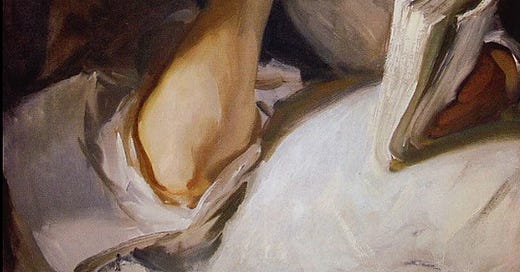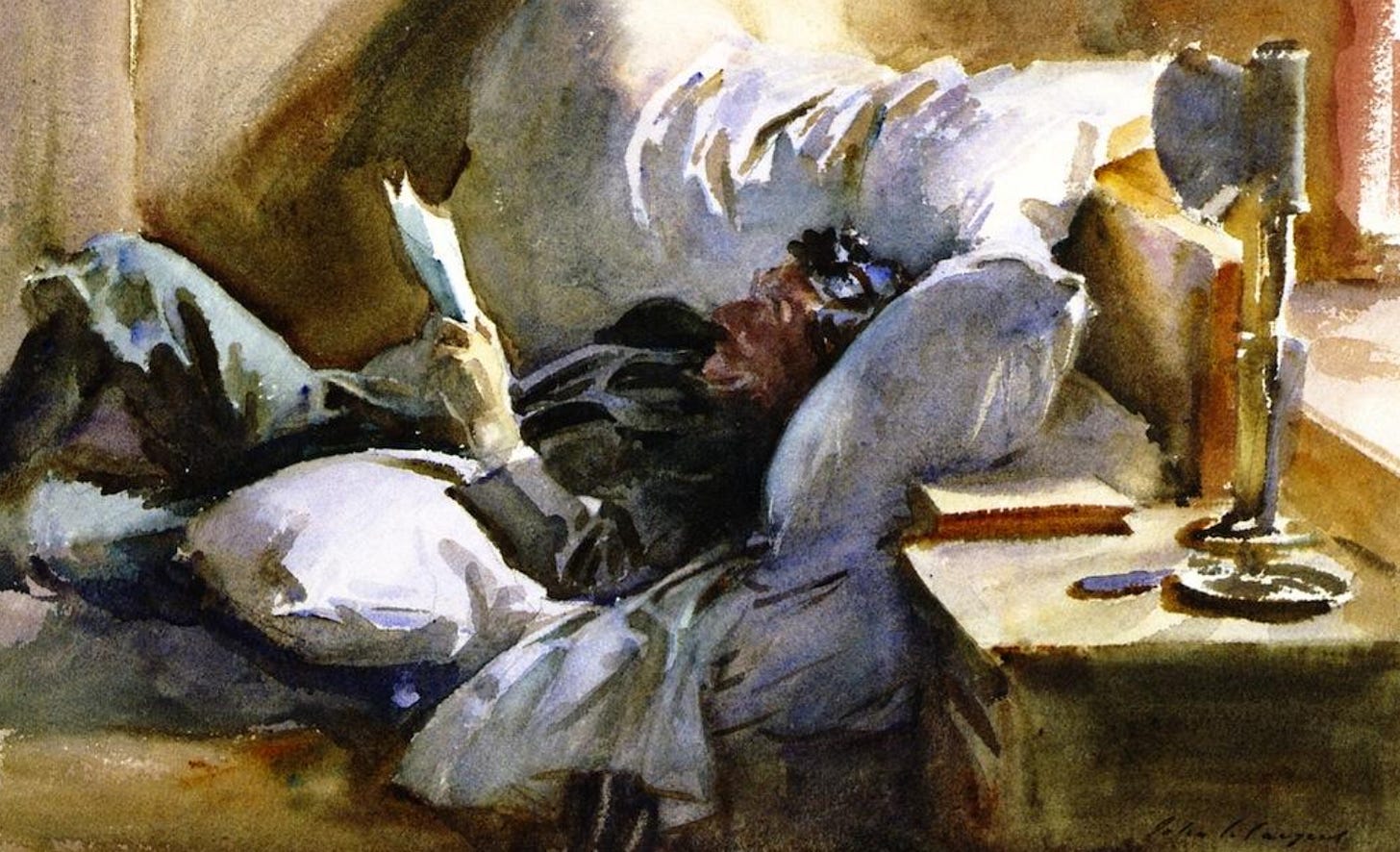C.S. Lewis once observed that reading was like a balm for the soul, what he characterized as “healing the wound of individuality.” His point was that reading offered a temporary release from the burden of being trapped in our own thoughts. As he put it “we read to know we are not alone.”
Likewise, in the painting below, by John Singer Sargent, we see a man lying in bed by himself reading a book. It’s a subtle and sensual depiction of the subjective surrender implicit in the act of reading. As C.S. Lewis observed: “Those of us who have been true readers all our life seldom fully realise the enormous extension of our being which we owe to authors.”
From an artistic perspective, this painting also represents a shift from portraying authors towards portraying readers. It’s hard to imagine today, but reading for pleasure was still considered quite controversial. Especially novels were considered a dangerous distraction. Against this, artists like Singer Sargent depicted the act of reading as a contemplative and very human activity.
Consider, for example, another painting by Singer Sargent, titled “Man Reading.”
These paintings depict what you might call the life of the mind. We read to live”, as Flaubert put it. And in that exchange, between the writer and the reader, something deeply human takes place. We read to live, but we also live to read.
Julian
Thank you for reading my newsletter.
If you’d like to access a weekly podcast where I discuss what I’m reading, please consider becoming a paying subscriber. It helps me keep this substack free. Thank you so much.






“Those of us who have been true readers all our life seldom fully realise the enormous extension of our being which we owe to authors.”
What a great connection to make!